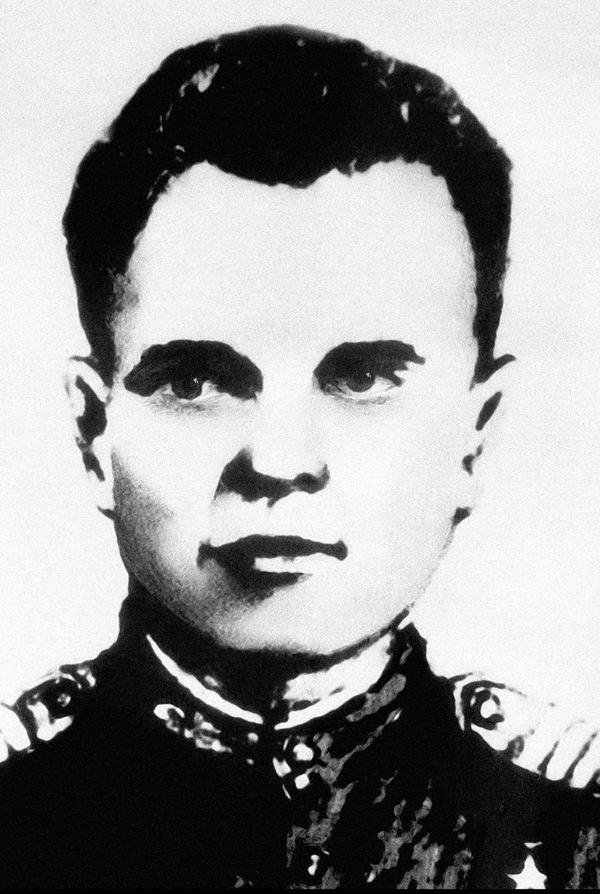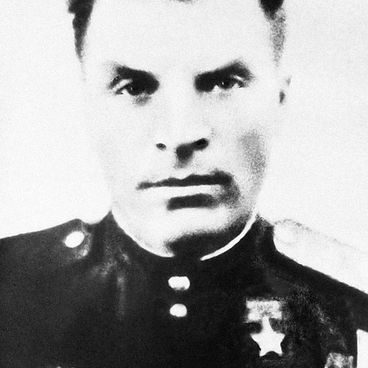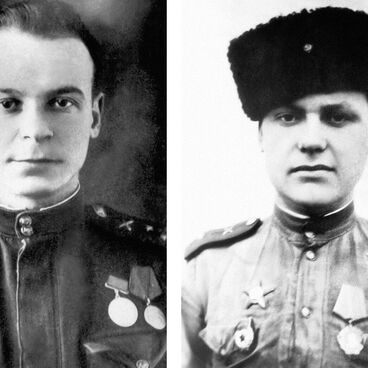Caesar Seliverstovich Raskovinsky was born in 1915 in the village of Vystupovichi of the Zhitomir Region in Ukraine. He graduated from a secondary school and then was employed by a local collective farm as a tractor driver and then as an assistant mechanical engineer.
In 1938, he was drafted by the Red Army. The conscript was mentioned for his outstanding accomplishments and, on military discharge, he joined the Internal Affairs Guards in the Vologda Region where he fought against embezzlement and armed gangs.
In August 1942, a year after Hitler’s invasion, Guards Sergeant Caesar Raskovinsky was called up to active duty to serve in the 96th separate rifle brigade as a 5th artillery battalion gunner. He took part in the battle of Stalingrad and was awarded the Red Star Order for his bravery.
The Stalingrad fiasco urged Hitler’s troops to attempt at Kursk. They amassed many military forces in that front sector. Caesar Raskovinsky served in the 286th Guards Rifle Regiment, which was engaged in the Kursk Salient operation. On July 7, 1943, the Raskovinsky-led 76 mm gun crew burnt some enemy tanks and guns at Batratsk Valley. However, the success momentum was not maintained the Nazi onset forced Soviet troops to retreat to the village of Sheino, north-east of Belgorod.
The sergeant accomplished an exploit on July 11, 1943 at the village of Melikhovo near Prokhorovka, Belgorod Region, where the largest tank battles ever in history began on the next day. Only Raskovinsky survived that battle in his crew.
He managed the gun on his own, brought up shells and sighted the gun. The artilleryman was able to hit 9 tanks and 3 trucks. Then, the Red Army switched to counterattack and seized on July 25 the key Nazi fortifications to reach the Severski Donets eastern bank.
Following the Kursk battle, Guards Sergeant Caesar Raskovinsky liberated Belgorod and fought the Nazis at Kharkov. In late December 1943, he was awarded the title of the Hero of the Soviet Union. However, Caesar Raskovinsky fell in action and so did not get his golden Hero Star.
In 1938, he was drafted by the Red Army. The conscript was mentioned for his outstanding accomplishments and, on military discharge, he joined the Internal Affairs Guards in the Vologda Region where he fought against embezzlement and armed gangs.
In August 1942, a year after Hitler’s invasion, Guards Sergeant Caesar Raskovinsky was called up to active duty to serve in the 96th separate rifle brigade as a 5th artillery battalion gunner. He took part in the battle of Stalingrad and was awarded the Red Star Order for his bravery.
The Stalingrad fiasco urged Hitler’s troops to attempt at Kursk. They amassed many military forces in that front sector. Caesar Raskovinsky served in the 286th Guards Rifle Regiment, which was engaged in the Kursk Salient operation. On July 7, 1943, the Raskovinsky-led 76 mm gun crew burnt some enemy tanks and guns at Batratsk Valley. However, the success momentum was not maintained the Nazi onset forced Soviet troops to retreat to the village of Sheino, north-east of Belgorod.
The sergeant accomplished an exploit on July 11, 1943 at the village of Melikhovo near Prokhorovka, Belgorod Region, where the largest tank battles ever in history began on the next day. Only Raskovinsky survived that battle in his crew.
He managed the gun on his own, brought up shells and sighted the gun. The artilleryman was able to hit 9 tanks and 3 trucks. Then, the Red Army switched to counterattack and seized on July 25 the key Nazi fortifications to reach the Severski Donets eastern bank.
Following the Kursk battle, Guards Sergeant Caesar Raskovinsky liberated Belgorod and fought the Nazis at Kharkov. In late December 1943, he was awarded the title of the Hero of the Soviet Union. However, Caesar Raskovinsky fell in action and so did not get his golden Hero Star.



